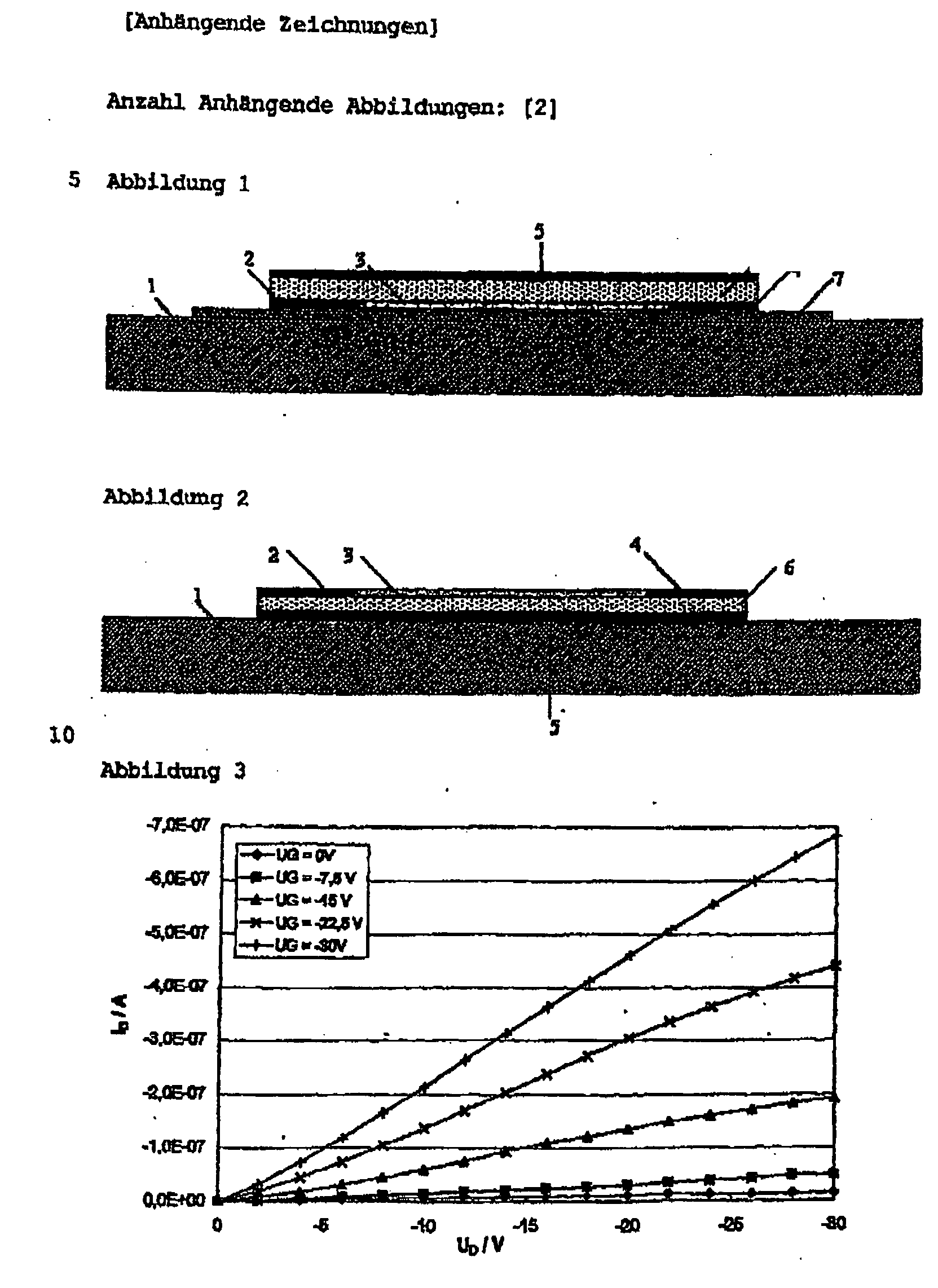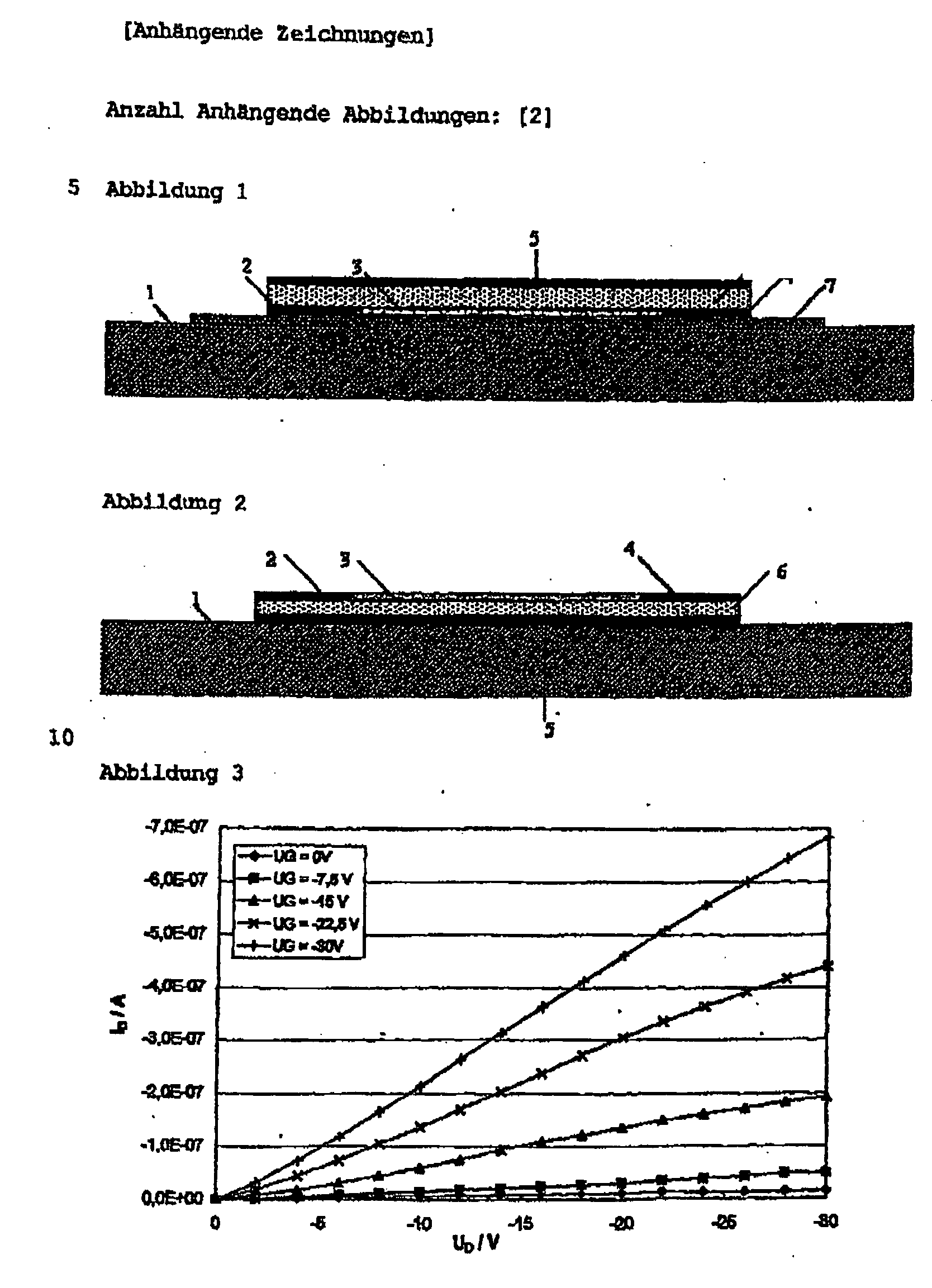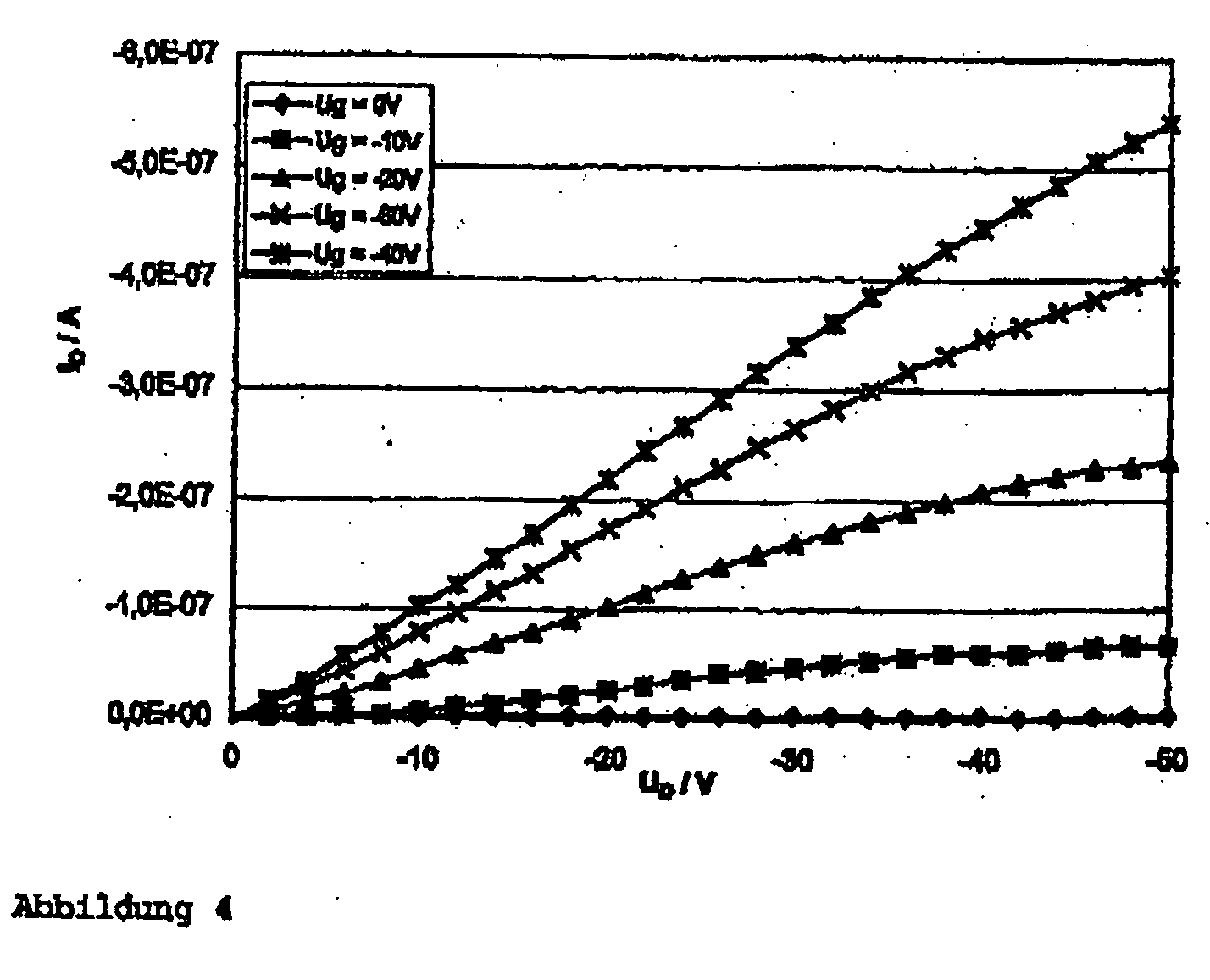Method for producing organic electronic devices on solvent-and/or temperature-sensitive plastic substrates
a technology of temperature-sensitive plastics and electronic devices, which is applied in the direction of discharge tube luminescnet screens, sustainable manufacturing/processing, and final product manufacturing, etc., can solve the problems of inability to protect abs-substrates, polycarbonate substrates or polystyrene substrates from the damaging effects of solvents during the manufacturing process, and the application of polysiloxane layers is not possible to protect abs-substrates, polycarbonate substrates or
- Summary
- Abstract
- Description
- Claims
- Application Information
AI Technical Summary
Benefits of technology
Problems solved by technology
Method used
Image
Examples
example 2
[0015]This example refers to the realization of the invention as shown in FIG. 2. A layer of the conductive polymer polyethylene dioxythiophen (Baytron) is applied by doctoring to an ABS-plate of 1 mm thickness as a plastic body 1. Said layer is structurized by selective laser abrasion with an excimer laser so that the gate electrodes 5 are obtained. Upon said layer and in order to generate the (insulation) protective layer 6, a layer of an alcoholic polyvinyl phenol solution containing a cross-linker is applied by spinning at 2000 r.p.m. Subsequently the polyvinyl phenol layer is tempered for 3 hours at 70° C. Over it, a thin gold layer (about 20 nm) is sputtered, out of which, in turn, the source-drain electrodes 2, 4 are generated by an excimer laser. Finally, the semiconductor layer 3 is applied by spinning up a 0.25% poly-3-hexylthiophen solution in toluol. The output characteristic of a field-effect transistor produced in such a way is shown in FIG. 4.
PUM
| Property | Measurement | Unit |
|---|---|---|
| temperatures | aaaaa | aaaaa |
| temperatures | aaaaa | aaaaa |
| temperature | aaaaa | aaaaa |
Abstract
Description
Claims
Application Information
 Login to View More
Login to View More - R&D
- Intellectual Property
- Life Sciences
- Materials
- Tech Scout
- Unparalleled Data Quality
- Higher Quality Content
- 60% Fewer Hallucinations
Browse by: Latest US Patents, China's latest patents, Technical Efficacy Thesaurus, Application Domain, Technology Topic, Popular Technical Reports.
© 2025 PatSnap. All rights reserved.Legal|Privacy policy|Modern Slavery Act Transparency Statement|Sitemap|About US| Contact US: help@patsnap.com



